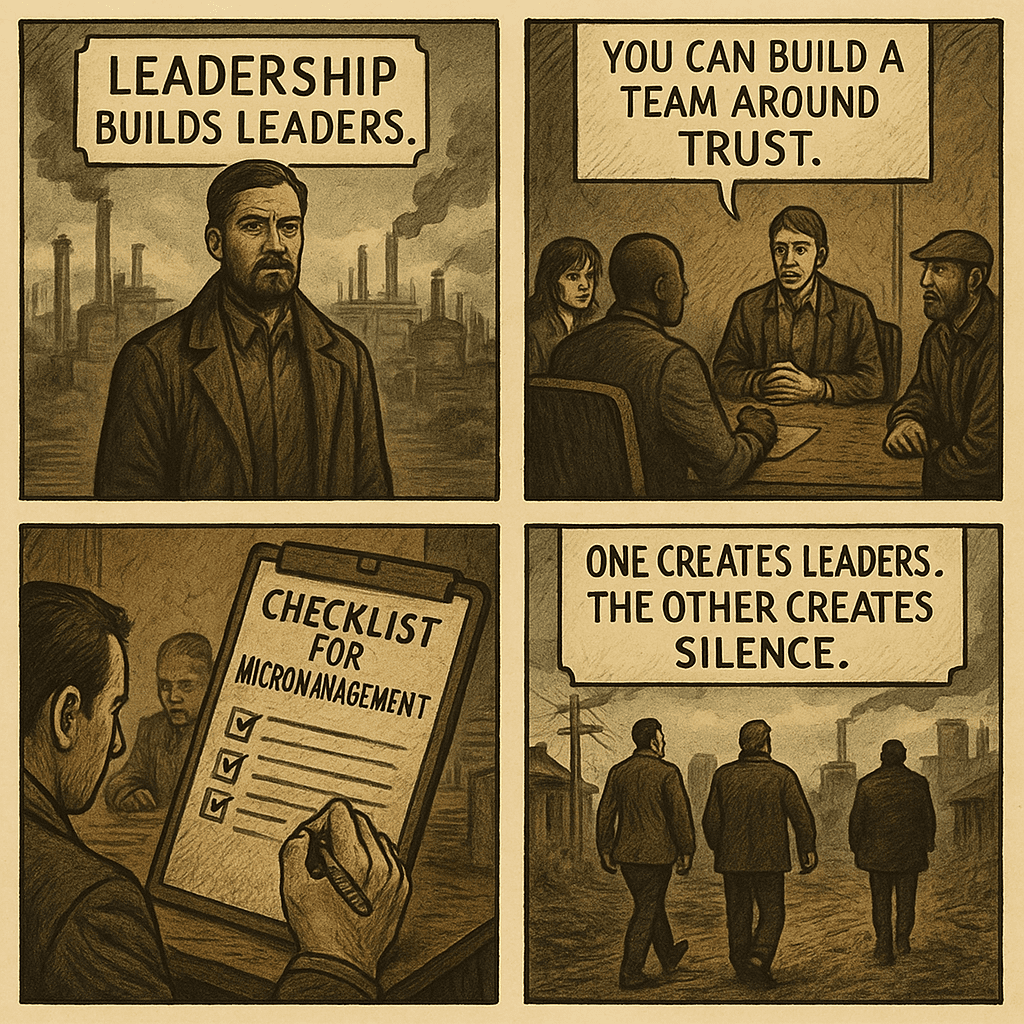ha-va.com | Export Manager | Export Partner DACH-PL-CZ
Trust-Based Leadership: How Teams Deliver Under Pressure
Live TV is a bit like brain surgery with an audience – and no room for do-overs. You either trust your team to do their jobs, or you watch the whole thing crash in real time.
What Live TV Can Teach Us About Leadership and Team Performance
There’s something magical – and mildly terrifying – about producing a live broadcast. One slip, one missed cue, one mic left on when it shouldn’t be, and the whole operation starts to fall apart in front of an audience of thousands. Or millions. It’s not a one-person show – it’s an orchestra of specialists: camera operators, sound engineers, moderators, directors, producers, make-up artists… each with deeply specific, non-transferable skills. When you’re live, you can’t just jump in and “quickly” do someone else’s job. Everyone must be in sync. Everyone must deliver. At the exact same moment.
I’ve been working in these teams. Led them, too. And I can tell you: the biggest leadership challenge isn’t the pressure, or the speed, or the chaos. It’s letting go. It’s trusting your team. Not in theory, but in practice. Because if you don’t, you’ll either drive yourself mad trying to do everything – or worse, undermine the very people you rely on.
The Micromanagement Trap in Growth-Oriented Companies
Now – let’s zoom out for a second. In other industries I’ve been working with – sales, marketing, tech, automation and robotisation, e-commerce – things look very different. There are rarely moments when everyone has to act at the exact same time. Roles overlap. People often have similar skill sets. And strangely enough, this is where micromanagement thrives.
I’ve seen companies hire clever, proactive engineers – only for the C-level to dictate how a robot should be built. I’ve seen leadership teams tell business developers who to call and who to avoid – despite having no real market insight. I’ve seen growth managers expected to follow step-by-step instructions for launching a product that, by nature, demands exploration and experimentation. This isn’t leadership. It’s creative suffocation.
Initiative Dies Where Trust Is Absent
What happens next? Initiative disappears. People stop thinking. They wait. They execute orders. They no longer feel responsible – because someone else is always standing over their shoulder. And the organisation slowly starts to lose its edge.
The Core Rule: The More Competent They Are, The Less Control They Need
In live production, that simply wouldn’t fly. There’s no time to second-guess. You hire specialists because you trust them to deliver. The same should be true elsewhere. The setting may be different, but the principle holds: the more competent your people are, the less they need control – and the more they need trust.
Because here’s the thing: not every business runs live. But every team has its moment. And when that moment comes, the question is simple – will they rise to it? Or will they look up, waiting for instructions?
Leadership Builds Leaders. Micromanagement Builds Silence.
You can build a team around trust. Or you can build a checklist for micromanagement. One creates leaders. The other creates silence.

